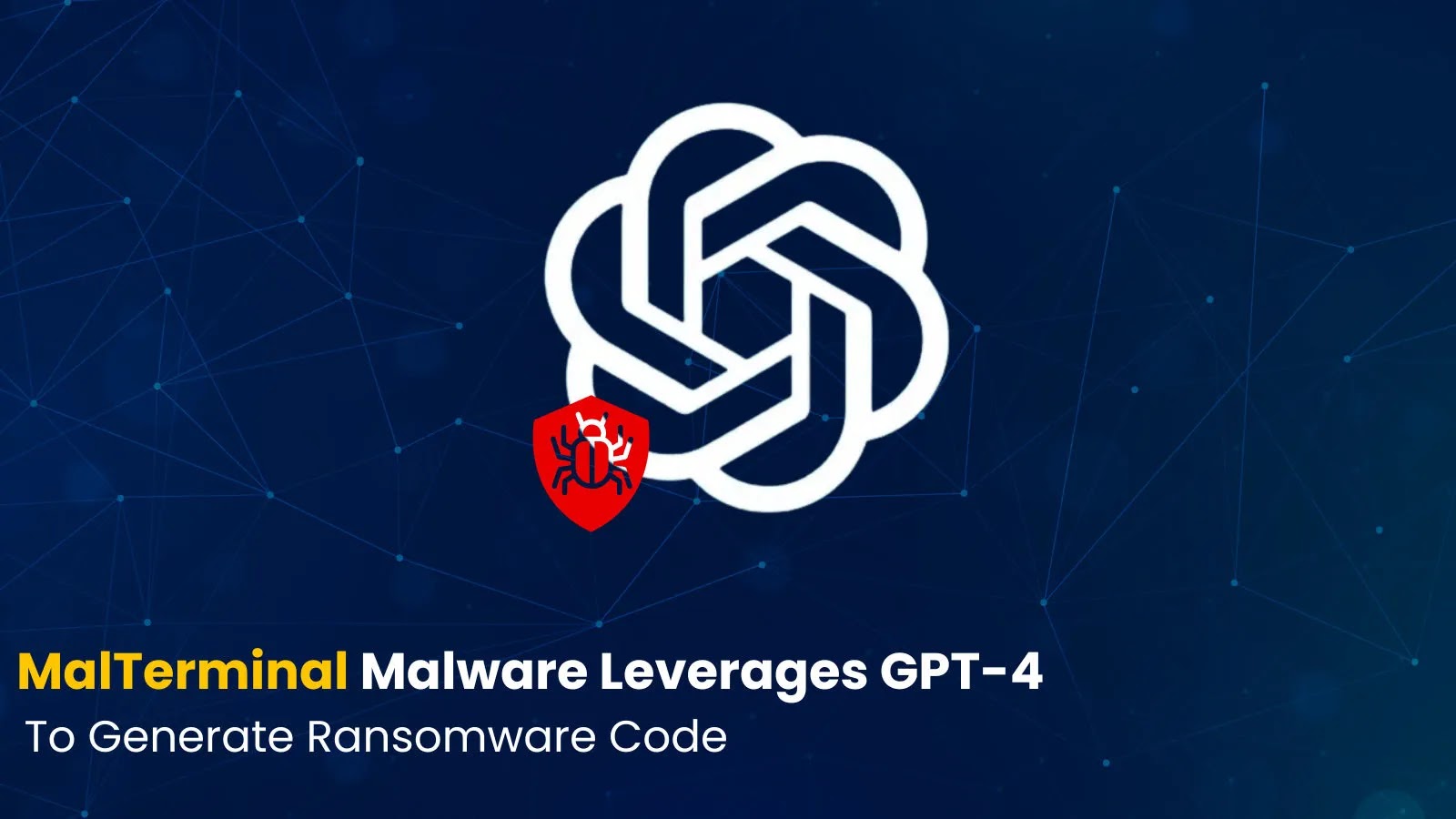
LLM-enabled MalTerminal Malware Leverages GPT-4 to Generate Ransomware Code
The Dawn of LLM-Powered Malware: Introducing MalTerminal
The landscape of cyber threats is perpetually reshaped by innovation, and a recent discovery signals a critical shift. Cybersecurity researchers have pinpointed what is believed to be the inaugural instance of malware actively leveraging a Large Language Model (LLM) to generate malicious code during execution. This pioneering threat, dubbed ‘MalTerminal’ by SentinelLABS, weaponizes OpenAI’s GPT-4, presenting an unprecedented challenge for traditional detection mechanisms.
Understanding MalTerminal’s Novel Malicious Capabilities
MalTerminal represents a significant leap in malware sophistication. Instead of relying on pre-compiled or static malicious payloads, this threat dynamically crafts its attacks. Specifically, it employs GPT-4 to generate:
- Ransomware Code: The LLM is tasked with creating operational ransomware modules on the fly, allowing for highly customized and potentially evasive encryption routines.
- Reverse Shells: Beyond ransomware, MalTerminal can also instruct GPT-4 to produce reverse shell code. This enables attackers to establish persistent, remote access to compromised systems, bypassing common network egress filters.
This dynamic code generation capability means the malware’s signature is constantly shifting, making it exceptionally difficult for signature-based antivirus solutions to detect. The reliance on a powerful LLM like GPT-4 allows MalTerminal to adapt its malicious intent based on environmental cues or specific attacker instructions, pushing the boundaries of autonomous cyber-attacks.
The Implications of LLM Integration in Cyber Attacks
The emergence of MalTerminal underscores several critical implications for cybersecurity:
- Evolving Evasion Techniques: Dynamic code generation offers a powerful means of evading static analysis and traditional signature-based detection. Each generated payload can be unique, making it harder to blacklist.
- Increased Attack Sophistication: LLMs can rapidly produce complex, functional code, lowering the barrier to entry for attackers while simultaneously increasing the sophistication of their attacks.
- Challenges for Incident Response: Identifying and mitigating LLM-generated malware requires advanced behavioral analysis and potentially AI-driven defense mechanisms, moving beyond conventional forensic tools.
- Ethical Concerns for AI Developers: This development highlights the urgent need for robust safeguards and ethical considerations in the development and deployment of powerful AI models to prevent their misuse.
Remediation Actions and Proactive Defense Strategies
Addressing threats like MalTerminal demands a multi-layered and adaptive security posture. While a specific CVE number for MalTerminal itself is not applicable as it is a type of malware rather than a vulnerability, the principles of defense remain crucial.
- Enhance Endpoint Detection and Response (EDR): Focus on EDR solutions that provide advanced behavioral analysis, anomaly detection, and real-time process monitoring to identify unusual code execution or resource access patterns.
- Implement Application Control and Whitelisting: Strictly control which applications and scripts are permitted to execute on endpoints. Prevent unauthorized code from running, regardless of its origin.
- Strengthen Network Segmentation: Isolate critical systems and data to limit the lateral movement of malware if a compromise occurs.
- Regular Security Awareness Training: Educate users about phishing, social engineering, and the dangers of executing unknown files, as initial compromise often relies on human interaction.
- Deploy Advanced Threat Intelligence: Stay informed about emerging threats and attacker tactics, techniques, and procedures (TTPs), especially those involving novel technologies like LLMs.
- Principle of Least Privilege: Limit user and application permissions to the absolute minimum necessary for their function, reducing the potential impact of a successful attack.
- Secure Software Development Lifecycle (SSDLC): For developers, integrate security best practices throughout the development lifecycle to minimize vulnerabilities that could be exploited by such sophisticated malware.
The Future of AI in Cyber Warfare
The emergence of MalTerminal is a stark reminder that artificial intelligence, while a force for good in many domains, can also be weaponized. Organizations must evolve their cybersecurity strategies to anticipate and counter AI-powered threats. This involves a proactive approach to security, continuous monitoring, and fostering a culture of vigilance. The battle against cyber threats is increasingly becoming a race of intelligent systems, demanding that defenders leverage AI capabilities effectively to protect their digital assets.





